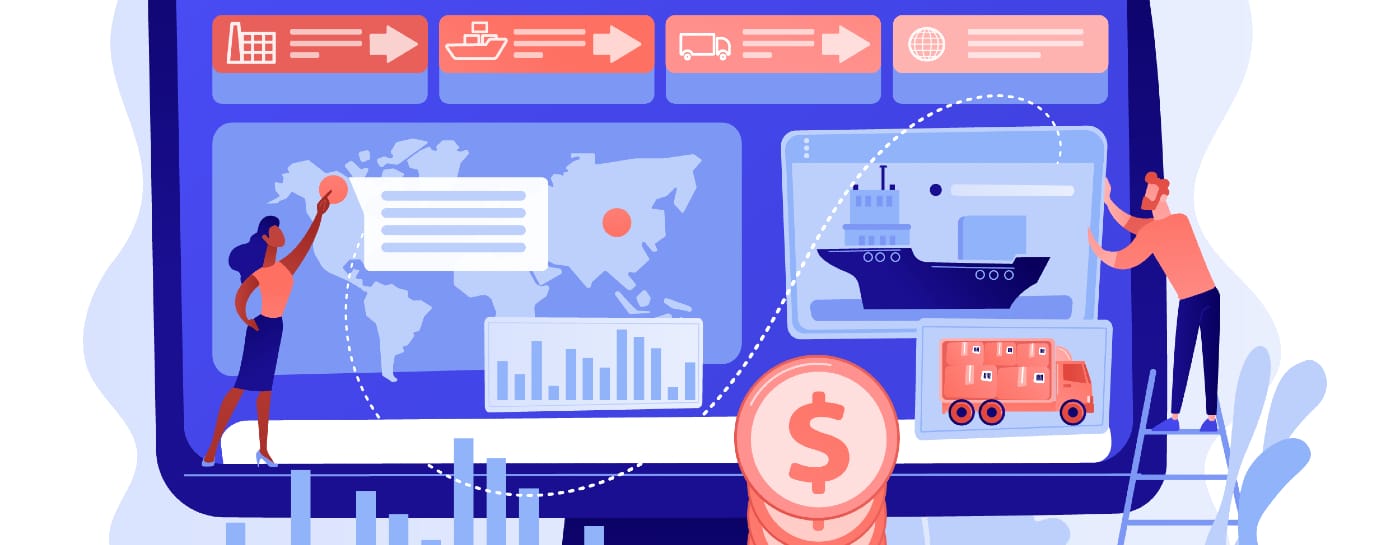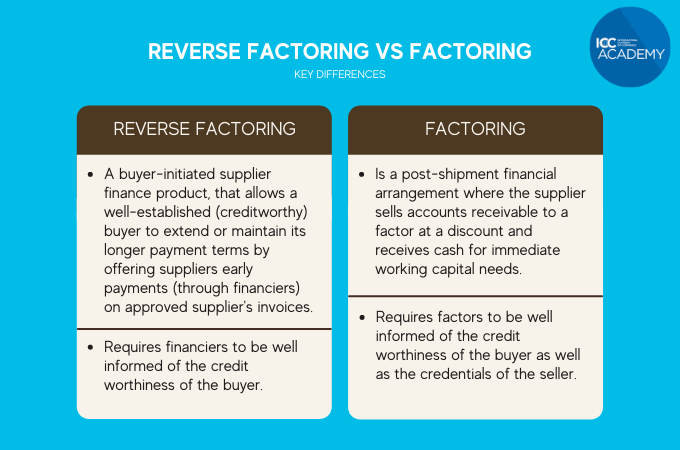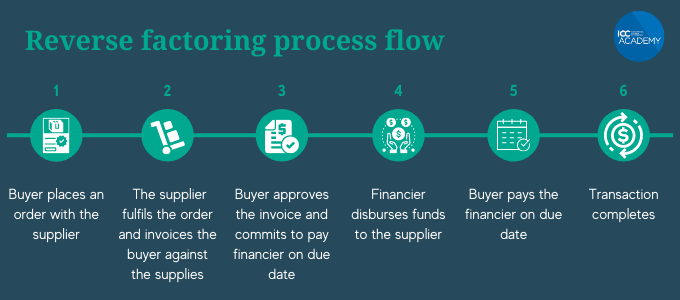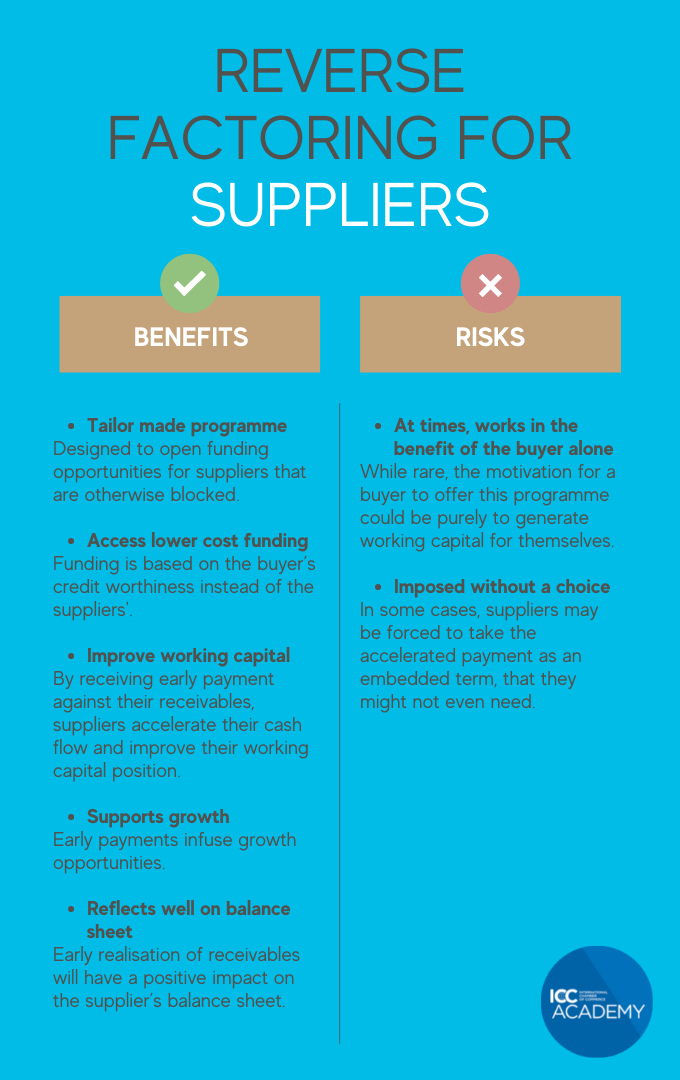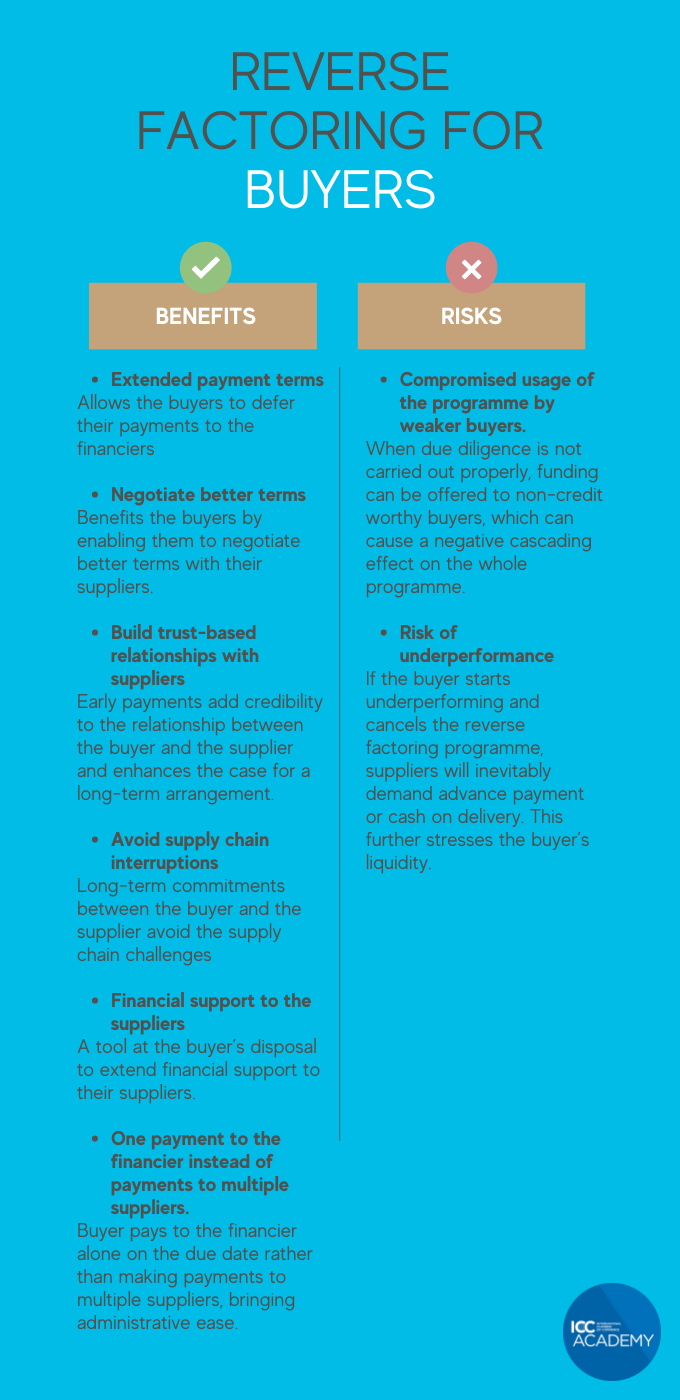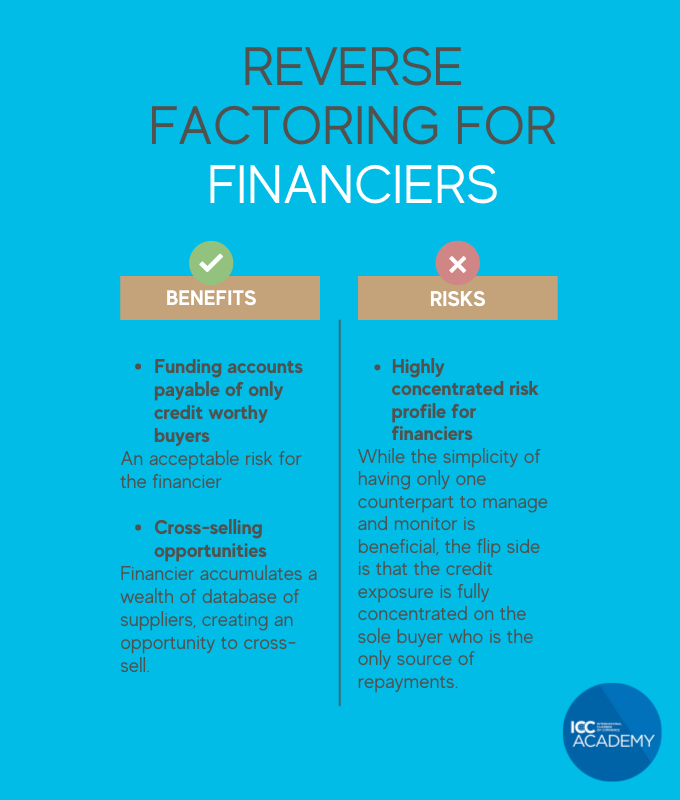This is a guest post for ICC Academy by Anthony Rajan, Senior Vice-President – ITFS Operations for the Vayana Network, a leading supply chain finance platform. The views expressed in this article do not necessarily represent the views of ICC or the ICC Academy.
What is reverse factoring? A simple definition.
Reverse factoring is a buyer-led supply chain financing programme that optimizes working capital by providing early payment to multiple suppliers, specially designed to cater to small and medium enterprises. It allows the credit worthy buyers to defer their payment.
This programme, unlike traditional factoring, allows the buyer to systematically approve the invoice for payment and raise a funding request against it with a financier. This enables the financier to finance the suppliers at a lower borrowing cost based on the creditworthiness of the buyer.
Reverse factoring is also referred to as
a) Accounts payable finance
b) Buyer-led supplier chain finance
Why does it exist and what need does it address?
Reverse factoring programmes exist to address the following challenges faced by an SME supplier and a credit worthy buyer:
- A supplier facing challenges in accessing finance to fulfil its cash flow deficit due to longer payment terms with the buyer.
- A buyer (procuring from multiple suppliers across geographies) facing issues in financing its supply chain that needs solutions that enable it to deliver on its commitments.
Reverse factoring is a win-win solution, tailor made for the challenges (highlighted above) faced by both the supplier and the buyer.
In a reverse factoring solution, the supplier gets accelerated payments while the buyer gets a longer-term payment solution. This not only bridges the financial challenges faced by both parties, but it also establishes a long-term business relationship.
Is reverse factoring the same as supply chain finance?
Supply chain finance includes many different forms of financing schemes and reverse factoring is one of them. While supply chain finance techniques offer funds for both pre-shipment and post-shipment requirements, reverse factoring finances deals with post-shipment financing only.
Reverse factoring vs factoring - key differences
An example of a reverse factoring transaction
Consider a scenario where a credit worthy buyer wants to procure raw materials or finished goods and arrange the funding against the purchases through a reverse factoring programme.
The buyer reaches out to the financier and works out an arrangement to pay its suppliers immediately against the supplies and commit to paying the financier within 90 days.
The process that facilitates this arrangement is as follows:
- The buyer initiates the order for raw materials or finished goods with its suppliers
- The supplier fulfils the order and generates an invoice.
- The buyer accepts the invoice and commits the financier to pay against the invoice on the due date.
- The supplier receives the payment from the financier immediately
- On the due date, the buyer makes the payment against the invoice to the financier.
An example of a factoring programme
An established Indian exporter ABC, engaged in the export of cotton fabrics is dealing with multiple buyers. ABC exports regularly to its buyers, however, these buyers make payment after 90 days from the date of shipment.
The delay in payment will bring about challenges in maintaining the cashflow and honouring ABC’s working capital commitments.
The factoring programme is a win-win solution that ABC can use to liquidate its trade receivables (through a factor) immediately against the shipment, and allow the buyers to pay on the due date i.e. in this case, within 90 days.
Factoring brings about faster cash realisation and provides the seller a strong footing to negotiate increased business volumes with the buyers.
Process flow of reverse factoring
- The credit worthy buyer places an order with the supplier
- The supplier fulfils the order and invoices the buyer against the supplies
- The buyer then approves the supplier’s invoice and confirms that it will pay the financier on the due date.
- Thereafter the supplier receives the funds against the invoice immediately from the financier
- As agreed, the buyer honours its commitment by making payment against the invoice to the financier on due date.
- The transaction completes.
A real world example of reverse factoring
A popular fashion brand and buyer from the United States, XYZ (not real name), launched a company-wide program to reinforce its leadership position as an innovator in sustainable mobility, financial, environmental, and social responsibility. The core objective was to deliver USD 10 million in additional free cash flow.
In order to meet its objective, XYZ turned to a reverse factoring solution.
This allowed XYZ to strategically extend supplier payment terms, whilst suppliers got paid early. The programme enabled XYZ to meet the following strategic goals:
- Implementation of a global, multi-supplier funding programme in record time
- On track to meet the goal of generating USD 10 million in free cash flow
- Stronger alignment between finance, procurement, and the suppliers
Reverse factoring: benefits vs risks for suppliers
Reverse factoring: benefits vs risks for buyers
Reverse factoring: benefits vs risks for financiers
Reverse factoring: current market and future potential
It is estimated that USD 255 billion to USD 280 billion trade is financed through reverse factoring, which accounts to 20 to 25 percent of global trade payables.
Reverse factoring reduces costs across the supply chain by letting suppliers borrow against their buyer’s creditworthiness instead of their own. Hence, it is a popular product with great potential to grow in popularity in the trade finance space.
Reverse factoring is usually offered by large buyer companies that want to improve their own cash flow situation as well as their suppliers’. Currently it is dominated by the large buyers and its unlikely that that will change in the near future.
The COVID-19 pandemic has brought disruption to the world and equally disrupted the way that companies do business. It has forced companies to rethink their digital strategies and made many companies adopt technology as an enabler.
Reverse factoring has been gaining attention during the pandemic as a part of the supply chain finance industry. The investment needed to improve the IT infrastructure and develop products and services that cater to reverse factoring needs has increased as a result.
About the author
Anthony Rajan is the Senior Vice-President – ITFS Operations for the Vayana Network, a leading supply chain finance platform in India, Singapore and the United States.
Vayana Network provides digital access to low-cost financing to enterprises. Vayana Network’s ITFS-International Trade Finance Services platform (in the making) will enable sellers and buyers across the globe to auction their trade receivables / payables digitally at competitive rates through a transparent bidding process with participation from multiple financiers.

